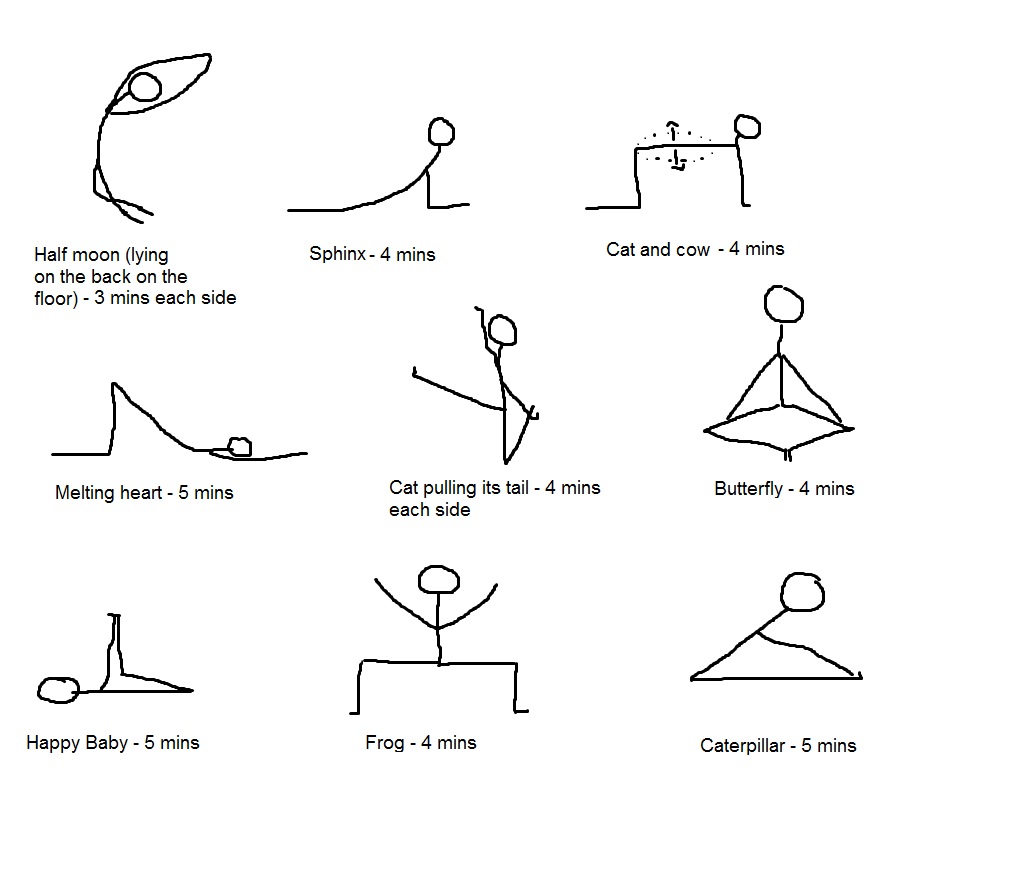

Poses stretch the connective tissue around the joints. Poses are held for longer periods of time–generally, two minutes per pose. Active backbends, standing poses, arm balances, and active inversions are yang because they require muscular engagement to protect the structural integrity of the body. It is good to move the body, get the blood flowing, and warm the muscles through yang yoga, then stretch the connective tissue through yin postures which are kept for longer holds.

Seated meditation is a yin activity, but you can’t do it comfortably when your connective tissue is tight.

Yang yoga removes energy stagnation.īut it might not be enough on its own. If you think of muscle as being like a sponge, it is easier to stretch it out when it is wet. Yang yoga is beneficial because stretching is easier with muscles that are fluid. Handstand Pose (Adho Mukha Vrksasana) and Headstand Pose (Sirsasana), which fill muscles with blood. Why Yang Yoga Helps Us Stay Suppleįrom a Taoist perspective, much of Western yoga is yang, because it focuses on movement and muscular contraction, such as in Sun Salutations (Surya Namaskar), Vinyasa flow, or even active inversions like It’s important to keep these areas of the body fluid and supple, especially as we age and are more prone to injury. Over time, and with stress, aging, and lack of stretching, connective tissue gets stiff and “shrink-wrapped,” causing tightness, reducing mobility, and potentially impairing organ function. Connective tissue is found in every bone, muscle, and organ, but it’s most concentrated in the joints. Those that focus primarily on connective tissue are yin. Of course, in all yoga postures, both muscle and connective tissue are worked to some degree, but poses or movements that focus primarily on muscle are yang. Yin tissues, like connective tissues (ligaments, tendons, and fascia) and bones are dryer, harder and stiffer. Yang tissues are more fluid-filled, soft, and elastic. When we look at yoga poses from a Taoist perspective, the most important factor is the elasticity of tissues. But the heart is yang compared to the breastbone because the heart is softer, more mobile, more elastic.” In a teacher training that I attended, Paul Grilley noted, “The heart is yin compared to the breastbone because the heart is hidden. We can’t look at the moon and say, “The moon is yin,“ but we can say, “Relative to the sun, the moon is yin.” We also have to consider the traits of the thing being compared. Yin and yang are, of course, relative terms. Yang is changing, moving, revealing aspect. Yin is the stable, unmoving, hidden, shadow aspect of things. In Taoist thought, every phenomenon in the world can be described in terms of yin and yang energy, and all are a mixture of both. Hiroshi Motoyama, believe that connective tissue is the pathway for energy flow, conducting the life force into every organ and area of the body. This energy is connected by pathways, or meridians, ( nadis in Sanskrit), which we can think of as “rivers of health.” Some researchers, including the founder of Yin yoga, Dr. In Sanskrit, it is called prana, in Japanese ki, in Chinese qi and in Tibetan lung. (Need some yoga music inspiration? Check out Alo Moves on Spotify).Ancient yogis and Taoists believe there is energy running through the body. You can also get creative and make an ambient music playlist with a song timed to each hold. If you’re doing this on your own time, try setting a timer with a very gentle sound to remind you to switch poses. In a typical Yin class, an instructor is there to keep time, leaving you to enter the poses fully without worrying about how many minutes have passed. It can be hard to get used to, but with a regular Yin practice, you’ll start noticing the difference in your Yang practice, too. When you find your edge - where it would feel about right to stop in a more active pose - dial it back about 30 percent. Yin Yoga shouldn’t feel the same as a Yang class like Vinyasa since it works with different tissue groups. Learn more about Nadi Shodhana with Talia Sutra’s Alternate Nostril Breathing class on Alo Moves. Nadi Shodhana, or alternate-nostril breathing, restores harmony to the mind, body, and spirit - and balances the solar and lunar within us. We strongly recommend doing a balancing breathing exercise beforehand. Fair warning: The latter half of this practice includes a lot of hip work, which can bring up a lot of feelings. The sequence should take around 45-60 minutes to complete, depending on how long you hold the yin poses. Balance your celebratory Sun Salutations by turning inward with this Yin Yoga sequence celebrating manifestation and change. The Summer Solstice is coming, and with it radiance, fire, and expression.


 0 kommentar(er)
0 kommentar(er)
